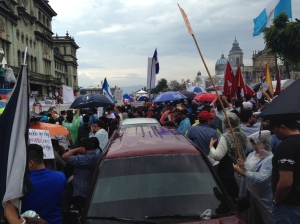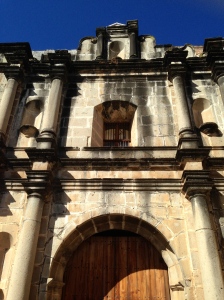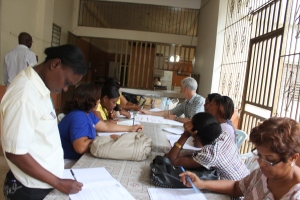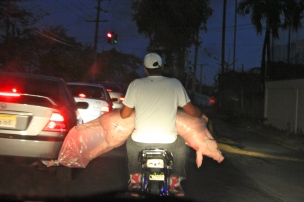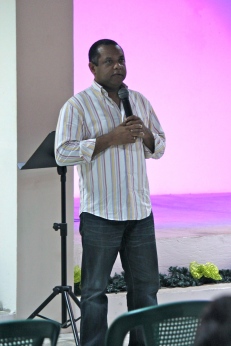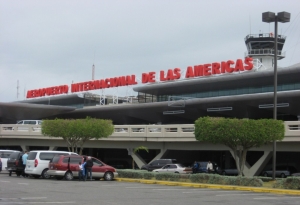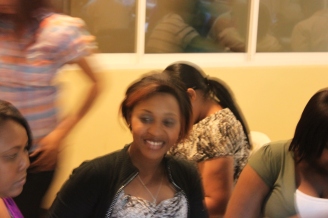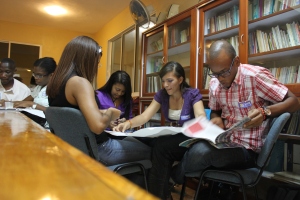Every tuesday my wife and I hang out with some middle-schoolers in an international school in Guatemala City. The idea is just to give the kids a space to be open and safe. We always start our time sharing the highs and lows of our weeks. A couple weeks ago one of the kids wanted to share something, but then retracted. He didn’t want to share anymore because he was to ashamed of what happened, to what my wife said, “what can be that bad?”. After a while sharing our stories the kid decided to share his story. What happened was that during the first classes of the day he needed to take a poop. He went to the bathroom did his business and then went back to the classroom. By the end of the school day, he realized that some of the poop had fell in his pants and had been walking around with poop in his pants the whole day. Then, he said, “I think my science teacher smelled it. I asked him a question, he came to my desk and answered really quick and left almost immediately.” After the kid told us his story my wife said, “ugh… that is a bad story. Joel, why don’t you tell the story when you pooped your pants.” I was like, “really? do you want me to tell it? sure, why not?” And then I proceeded to tell the story, especially because I was the same age as the kid when it happened to me. When I finished telling the story the kids who were with us laughed really hard, and the kid who had spent the day with poop in his pants just said, “that is actually worse that what happened to me.”
A very important part of the process that I have undergone in the last couple years is learning to laugh at myself. I have to keep learning to laugh at myself when I listen to my story and others’ stories. A while ago I had the privilege to have conversation with the Catholic theologian James Alison and Kris Rocke, the Director of The Center for Transforming Mission, in Tacoma, WA. During the conversation we had, Alison told us a little bit about the context where he serves. James Alison lives in Sao Paulo, Brazil, in one of the red light districts of the city.
As the conversation went on Alison told us that there is a lot of gay and lesbian kids who gather just down the street of his apartment complex.[1] At some point during the conversation Kris asked Alison, “Do you do any pastoral care with these kids?” Alison’s response was amazing. “In reality, what I do is just let them laugh at me. I wear a pair of really tight leather boots and go out to the street to hang out with them, because the gospel, the incarnation calls me to inhabit with them in the place of shame so they can be shameless.” When Alison said that, I didn’t know how to react. For a moment I had to excuse my self of the conversation because I could not hold my laugh any longer. The way he depicted himself was ludicrous, a 6’2’ British gentleman wearing a pair of tight leather boots, and the seriousness of his theological statement did not fit my understanding of theology and humor.
According to Alison, the power of the Gospel is: “That God occupied the place of the cast out one, of the rejected one, of the condemned one so as to show how God’s goodness and God’s creative power and God’s ability to harmonize different realities in a peaceful order has little or nothing to do with the “wise”, the “powerful” and the “righteous” of our world.”[2] It is in that place of shame that Jesus was willing  to make a fool of him for the sake of humanity. In June 2010 my friend, Kris Rocke, brought to my attention an ancient inscription. It is called the “Alexamenos Graffito,” which is probably the earliest depiction of Jesus that has been ever found. The graffiti is a picture of a man, Alexamenos, worshiping a crucifix. The fact that captivates me the most about this inscription is that the man on the cross has the head of an ass. The inscription underneath the picture translates: “Alexamenos worships his God.”
to make a fool of him for the sake of humanity. In June 2010 my friend, Kris Rocke, brought to my attention an ancient inscription. It is called the “Alexamenos Graffito,” which is probably the earliest depiction of Jesus that has been ever found. The graffiti is a picture of a man, Alexamenos, worshiping a crucifix. The fact that captivates me the most about this inscription is that the man on the cross has the head of an ass. The inscription underneath the picture translates: “Alexamenos worships his God.”
Even thought this depiction of early Christianity is trying to discredit the Christian faith, it sums up what the Gospel is beautifully, in Rocke’s words, “God’s willingness to play the ass is what makes Christianity… well, Christian.” I think, that God’s willingness to make a fool of God’s self is a beautiful image. So, why not to make a fool of myself to take the shame of the kids I work with? Why not to let them laugh at me in order to deflect the shame some of them have because of who they feel attracted sexually? I know that the story I shared earlier might seem ludicrous, but what if that place of shame is in the life of kids who suffer abuse and live in the “low places” of society? How do I take the shame of something that is not mine? This process of learning to laugh at myself, of moving from haughtiness and perfection to humor and imperfection has become very important in the process of doing theology within the urban context, especially among vulnerable populations. I cannot say that I have learned my lesson and that I am willing to laugh at myself all the time. Nevertheless, the process of understanding God’s sense of humor is a journey that I am willing to embark on even if it means to make a fool of myself.
[1] James Alison, “From Impossibility to Responsibility: Developing New Narratives for Gay Catholic Living,” James Alison Theology [home page on-line]; available from http://www.jamesalison.co.uk/texts/eng63.html;
[2] Ibid., 6
 Relational leadership is a relatively recent term in leadership literature. For that reason, I think it is important to take some time to explore not only the meaning of such a term, but also the implications of its understanding. The idea that I have found the most helpful is the one presented by Komives, Lucas, and McMahon in “The relational leadership model.” For the authors, leadership is more than a theory, it’s a philosophy on how we engage and relate with people to provoke change. Thereby, relational leadership becomes a framework that reflects how the organization’s or community’s purpose influences the ideas of being inclusive, empowering and ethical. In other words, relational leadership includes others by empowering them to use their gifts in order to bring change that benefits and transforms their community, organization, or environment for the common good.
Relational leadership is a relatively recent term in leadership literature. For that reason, I think it is important to take some time to explore not only the meaning of such a term, but also the implications of its understanding. The idea that I have found the most helpful is the one presented by Komives, Lucas, and McMahon in “The relational leadership model.” For the authors, leadership is more than a theory, it’s a philosophy on how we engage and relate with people to provoke change. Thereby, relational leadership becomes a framework that reflects how the organization’s or community’s purpose influences the ideas of being inclusive, empowering and ethical. In other words, relational leadership includes others by empowering them to use their gifts in order to bring change that benefits and transforms their community, organization, or environment for the common good. Relational leadership is a relatively recent term in leadership literature. For that reason, I think it is important to take some time to explore not only the meaning of such a term, but also the implications of its understanding. The idea that I have found the most helpful is the one presented by Komives, Lucas, and McMahon in “The relational leadership model.” For the authors, leadership is more than a theory, it’s a philosophy on how we engage and relate with people to provoke change. Thereby, relational leadership becomes a framework that reflects how the organization’s or community’s purpose influences the ideas of being inclusive, empowering and ethical. In other words, relational leadership includes others by empowering them to use their gifts in order to bring change that benefits and transforms their community, organization, or environment for the common good.
Relational leadership is a relatively recent term in leadership literature. For that reason, I think it is important to take some time to explore not only the meaning of such a term, but also the implications of its understanding. The idea that I have found the most helpful is the one presented by Komives, Lucas, and McMahon in “The relational leadership model.” For the authors, leadership is more than a theory, it’s a philosophy on how we engage and relate with people to provoke change. Thereby, relational leadership becomes a framework that reflects how the organization’s or community’s purpose influences the ideas of being inclusive, empowering and ethical. In other words, relational leadership includes others by empowering them to use their gifts in order to bring change that benefits and transforms their community, organization, or environment for the common good.